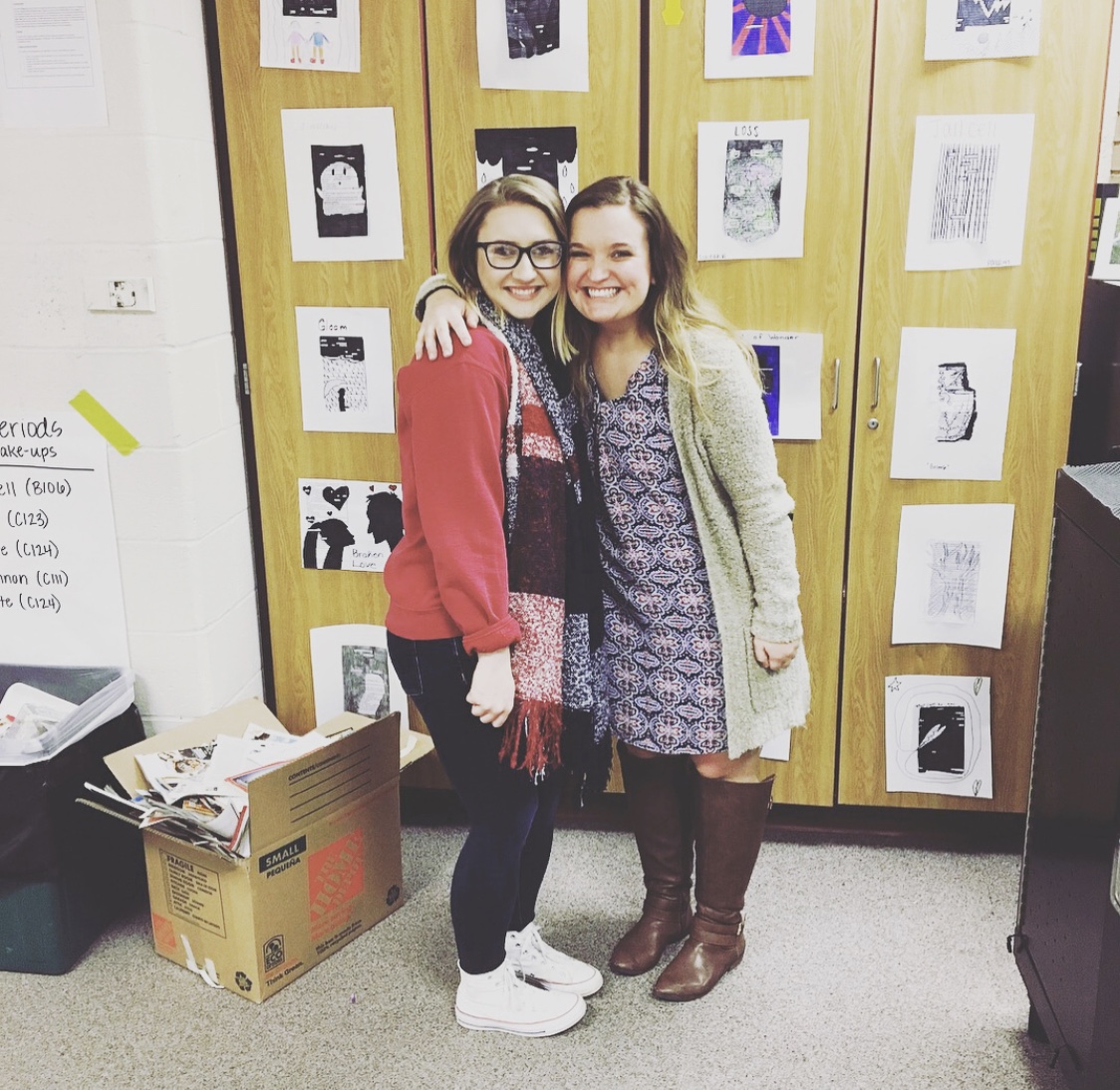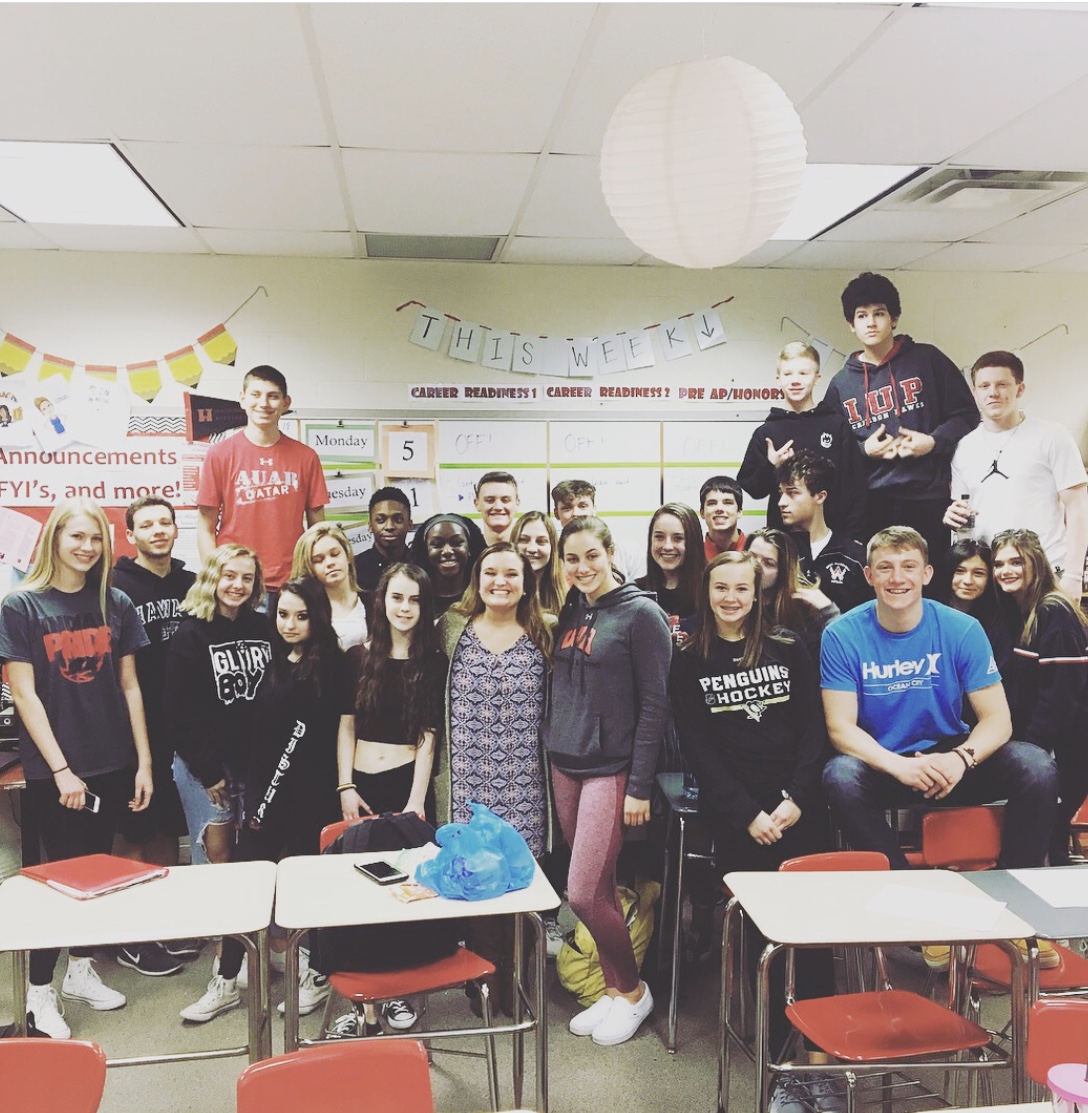Incorporating Reading and Writing in the Middle School Classroom
How can middle schoolers be great readers AND writers? RIF caught up with Katie Padden a middle school English and Language Arts teacher in rural Burgettstown, PA to get the inside scoop. Read on to learn why Katie thinks reading and writing go together like peanut butter and jelly!
Teaching isn’t for everyone, but it is for me. Teaching makes my heart full, my mind free, and provides endless happiness. Though I am a new teacher, I have experienced, life changing lessons and have seen students benefit from my teaching more than I expected.
I always tell my students that being in the English classroom is self-rewarding because it is all about interpretation. There is no right or wrong answer when discussing symbolism in a novel, poem, or short story. There is no wrong answer when you take a stance on an argument, use it in an essay and support it with factual evidence. ELA gives students the freedom and responsibility to take a simple story and read between the lines to understand what they believe the author is trying to say to the audience. Taking it a step further, how can students achieve being great readers AND great writers? Reading and writing go hand in hand when teaching different skills in the classroom. I like to think of them as cookies and milk, salsa and chips, and peanut butter and jelly!
Even though middle school students are young, they can be great readers and writers. The key is to create lessons that engage students to their likes, hobbies and outside world. Even though society has changed since many of us were in middle school, it is our responsibility to research what our students are doing outside of the classroom to connect them inside the classroom. Without reading, there is no writing. Without writing, there is no reading. This beautiful combination makes students able to not only express themselves but see the world in many different ways.
Whenever I plan units for my middle school classroom, I create the essential question first. What do I want my students to learn and where do I want them to be after? Next, I choose what two skills I want to cover - one reading and one writing. This allows students to understand exactly what they are learning whether it is argumentative writing, setting, or informative writing. I then look at the standards and choose which ones fit best with my essential question and skills. Even though many people believe standards are suffocating educators, I use them as a stepping stone to determine exactly what I want to achieve at the end of the unit. Then, I pick a novel, short story, article, poem, etc. to use as my main source for the unit. After I find a written source that aligns to my essential question, skills and standards, I create writing prompts and activities daily and weekly to prove that the students are growing and understand the skills being taught.
Teaching is a hard profession. Yet, even if you see one student achieve, it is the best feeling in the world. Even though I am just starting off my career, I cannot wait to see where it takes me.
Want to see the reading resources Katie loves using in her classroom? Click here to check out her Favorites List for literacy games, activities, curriculum guides, read aloud videos and much more that you can incorporate in your classroom when school is back in session!

